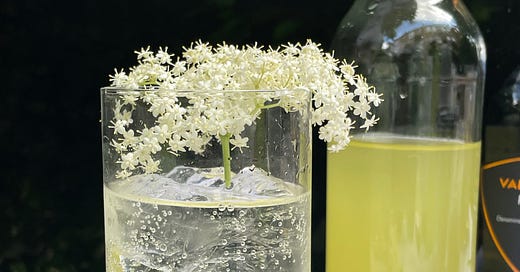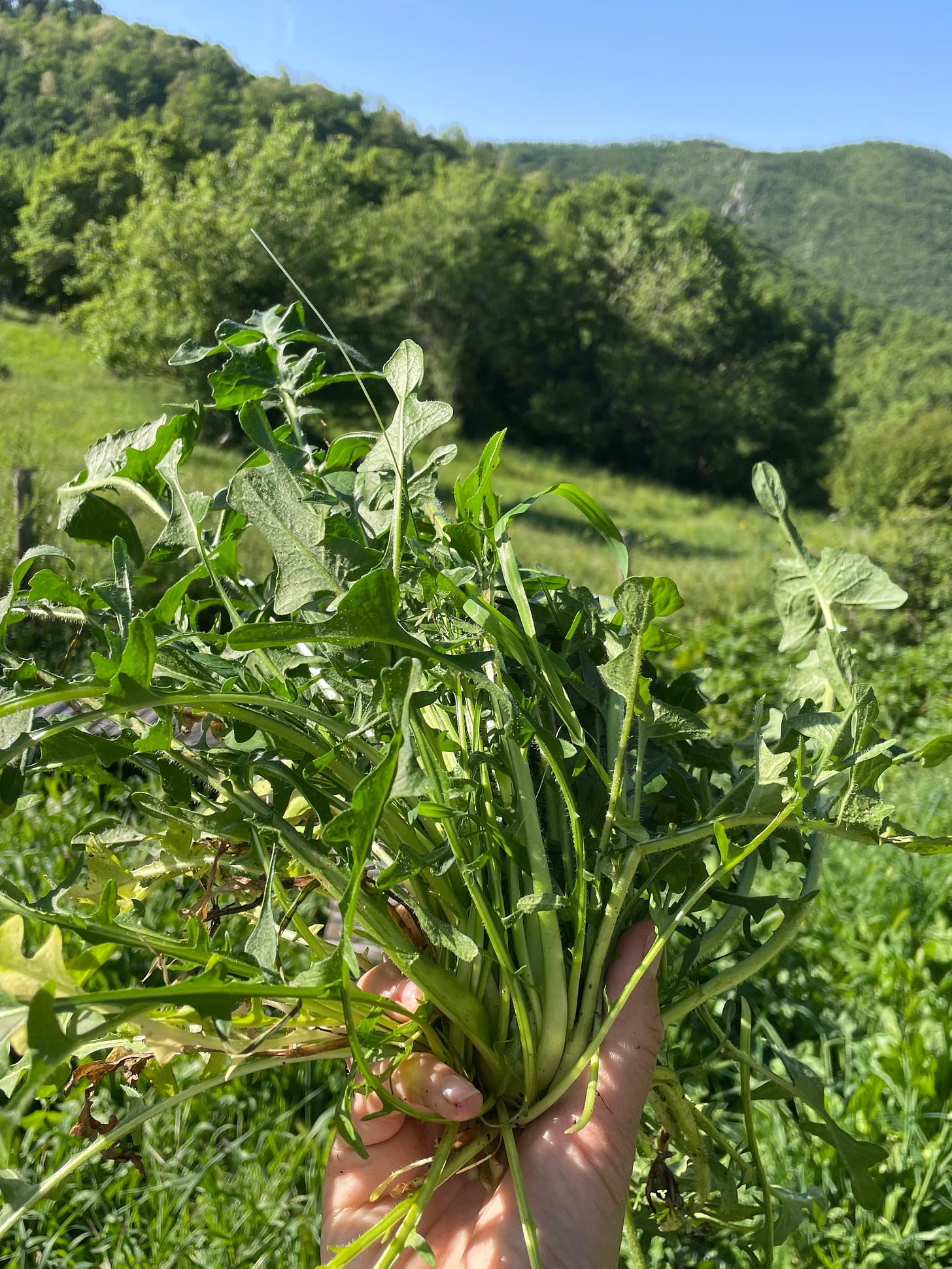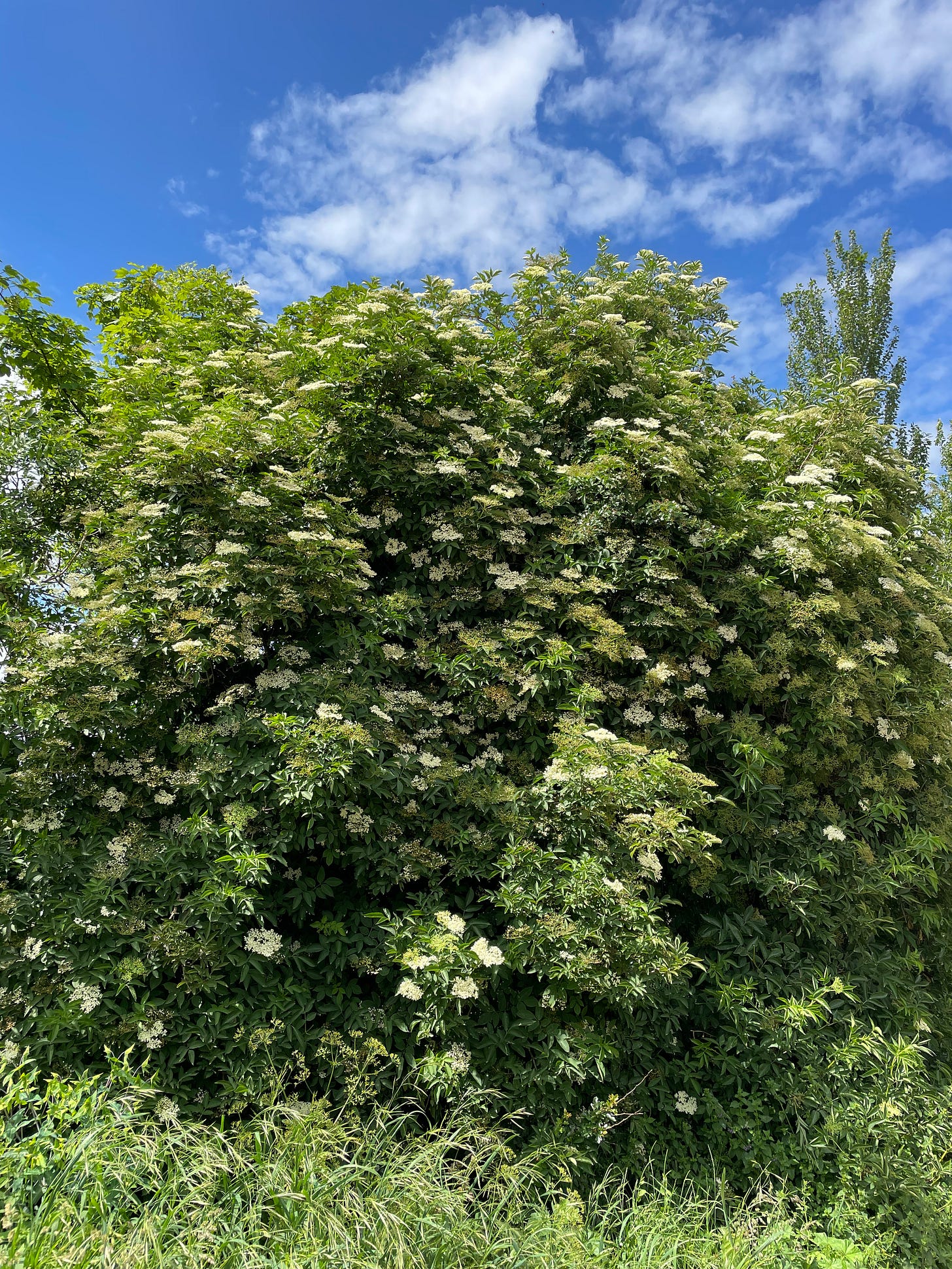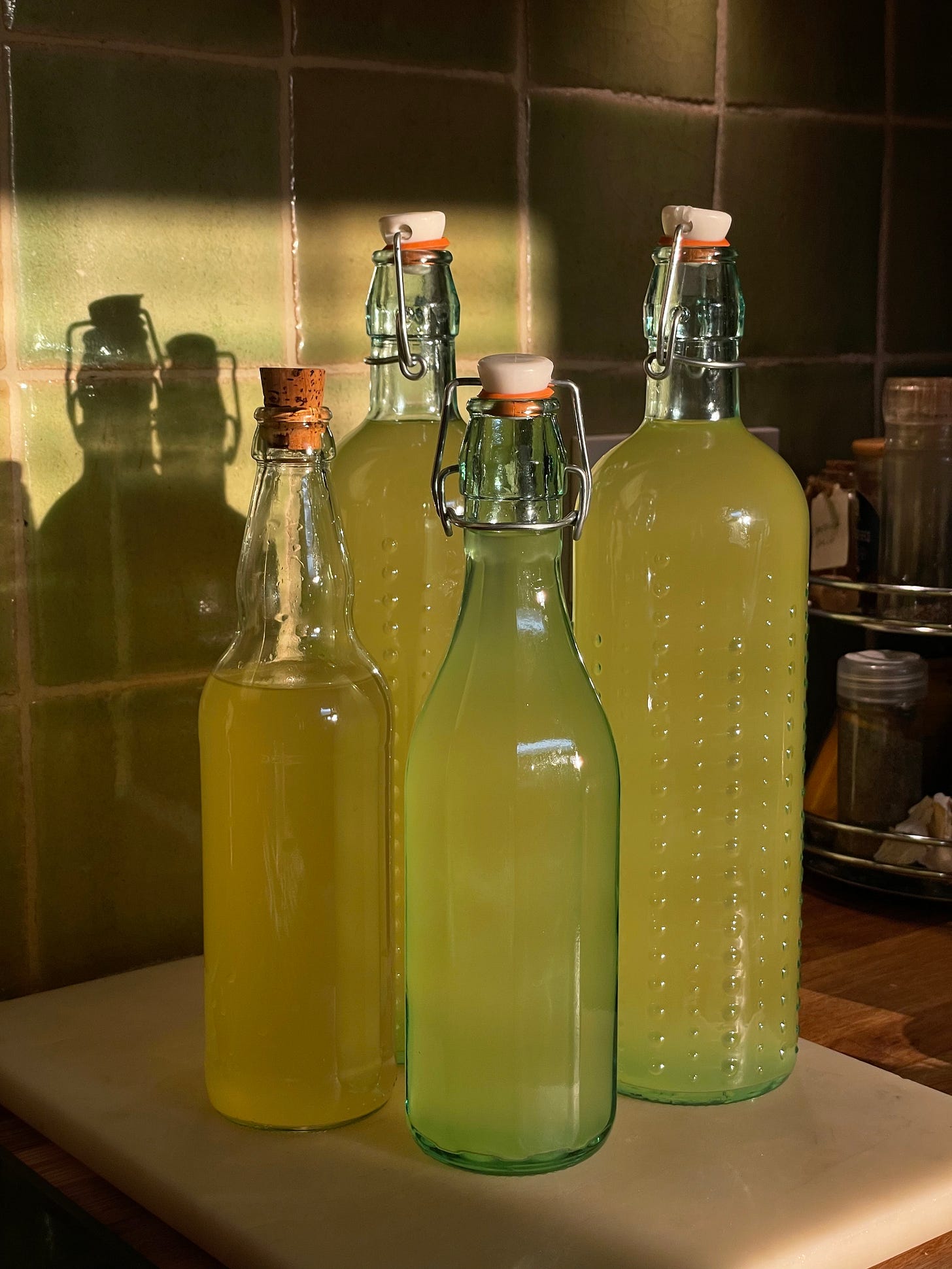Finding nature in the big city 🌿
what you can easily forage at the end of May/June for a delicious summer season
Welcome to A standing reservation! Thanks for reserving your table. If you’ve found your way here via pure luck and haven’t already reserved your standing reservation, pencil yourself in the book and we’ll be sure to serve you up something good:
Need to catch up on A standing reservation? Head over to the archive to catch up on what you might have missed.
There’s only a few weeks available in July and August to sail to Ponza and Palmarola with us this summer 2024! & better yet, we’re offering special pricing for the remaining weeks…
Reply directly to this email and I’ll send you the full brochure. A brief overview can be found on the tavolotwelve website.



What’s flowering?
After a stint away in the Tuscan countryside cooking for a beautiful group of women at Meadowsweet Retreats in Tuscany, I walked away feeling reconnected and inspired by nature. It’s funny, once you’re reintroduced to wild plants and the silence of the countryside, it’s almost hard to imagine how you live life without it all. You don’t stop to take notice of how the pace of the city, day in and day out, pulls the energy out of you. Never for a moment stopping until you yourself can’t sustain the constant movement.
If you’re reading this and you live in a city (small or big), you’ll understand that the conveniences of modern day society can be a distracting reality for any sort of nature, whether we realize them or not. The train takes you to where you need to be quickly and efficiently (unless it’s a strike, then you’re screwed), Uber is a click away, there’s a grocery store on every corner or, if you’re feeling unmotivated, you can have your groceries delivered straight to your door. There’s Deliveroo, Door Dash, Uber eats…the list goes on for the amount of conveniences that allow us to either never leave the house or avoid busy city streets and human interaction with ease. But what you miss are the simple pleasures like the ones that are most likely in bloom just outside your doorstep. The simple pleasures of the elderflower.
Depending on the city you live in, it might be more difficult to find elderflower, but here, in London, it’s in full bloom. I have a funny feeling that if you take yourself on a walk to the most green areas in your city, you might easily find an elderflower tree. Once you find one, I promise it’s all you’ll see. The flowers are beautiful, fluffy and white, with hopefully (for our exercise) lots of pollen. If you’re suffering from allergies at the moment, then it might be best to steer clear, but if you can handle a bit of sneezing, the golden syrup is well worth it.
Before living in England and Italy, I didn’t think much about the wild and seasonal plants that are edible and growing in our backyards. This is mostly due to the fact that suburban America is usually well kept from these wild growing varieties. Don’t quote me on that - it’s just an observation. My observation being that lawns are mowed on the regular and that the stereotype of your friendly American neighbor waving from behind the backend of his lawnmower isn’t just an illusion - that’s the truth. What was edible was simply whatever vegetables came from the garden that we planted for the summer season.
After living with and dating an Italian, I quickly became accustomed to eating the seasons. The wild seasons. Eating the seasons, at least in Italy, is not as simple as the vegetables that grow from your domestic garden, but also the foraged herbs that come from the ground. For instance, cicoria selvatica (wild chicory), which can be found almost all year round, is a bitter and wild growing green that can be foraged in most open fields. Even in parks around Rome which, you might even find some serious foragers plucking the greens for their dinner from the sprawling grasses within Villa Pamphili. Wild fennel fronds are another favorite of mine to cook and eat. The young fronds can be found in the spring and eventually go to flower in the late summer making it perfect for drying and seasoning. Capers grow from old city walls and are eventually salted and jarred. The list of wild and delicious produce growing from the city walls in Rome rattles on.
For me, living and eating in this way brings me so much joy. I had lost sight of this foraging mentality - it’s like losing spirituality or forgetting to practice your daily meditation. Once you find it again, it becomes addicting. So, I found myself back in London, riding the tailwind of a beautiful trip in Italy, scouring the riverbanks for wild produce. I reminded myself it would never be like foraging cicoria from the Tusacan soil, simply to boil and sauté it - to make something delicious out of nothing. But at least I had a shot at finding something with my new foragers eye.
And the winner happened to be the humble elderflower. Maybe it’s not so humble? Because at the moment, it seems to be flooding the Hammersmith riverbanks, taunting me to pick almost every bushy and flowering plant. The gorgeous thing about elderflower is that it can be used for so many different uses. When I cooked alongside Olivia Cavalli, the beautiful, kind, and incredible cookbook author of Stagioni that she is, at Meadowsweet Retreat; she decided to use the elderflower in a semifreddo which was the perfect way to end our week of cooking together. The recipe she used called for elderflower cordial so this week’s recipe is for elderflower cordial. How you use it is up to you, but I enjoyed it in an elderflower spritz and let me tell you, it did not disappoint. So get out there, forage and make a spritz.
Elderflower Cordial
You’ll need to be sure you identify the correct plant so please consult with an expert in your area before picking just anything and eating it. Elderflower is pretty easy to identify but do be sure to check your sources. The sugar might seem excessive but it’s a cordial so you’ll only be using a small amount in your cocktail or mocktail.
Ingredients
25-30 elderflower heads
1kg of caster sugar
3 L (5pints) of water
2 lemons + zest (sliced)
1 orange + zest (sliced)
Collect the elderflower heads when it’s a warm and sunny day. Make sure to collect from the higher branches, away from traffic and any pollution. Brush off any bugs and insects. Do not wash the flowers as you’re looking to preserve the pollen (you’ll be ok, I promise - I hope. Kidding.) Snip the flowers off the thick part of the stem.
Boil the water and sugar until the sugar has dissolved. In a large container add the zest of both lemons, the orange zest plus their slices. Add the elderflower and pour the hot sugar liquid over the flowers, zest, lemon slices and orange slices. Allow this all to steep for 24-48 hours. The following day strain the liquid through a muslin cloth and bottle.
Elderflower Spritz
The cordial should be used in a small amount as the sugar is very concentrated. To make a mocktail - add the cordial and soda water and enjoy. The recipe for a spritz is below - just replace your bitters with the cordial.
2 ounces elderflower cordial
4 ounces prosecco
splash of soda water
garnish with elderflower
Sorbet
4 frozen nectarines (pit removed)
5 tablespoons of elderflower cordial
Blitz the nectarines in a blender and slowly add the cordial. Put into a container and freeze again for a few hours. Enjoy!
Until next time at a standing reservation…
With love & snacks,
Paige
Like what you’ve read?
If you’ve liked what you’ve read, show some love and feel free to like or leave a comment! Maybe even share with a friend!
Need a happy moment?
This will be the summertime pick me up. I hope you enjoy making your own elderflower cordial as much as I have enjoyed making it from start to finish.













